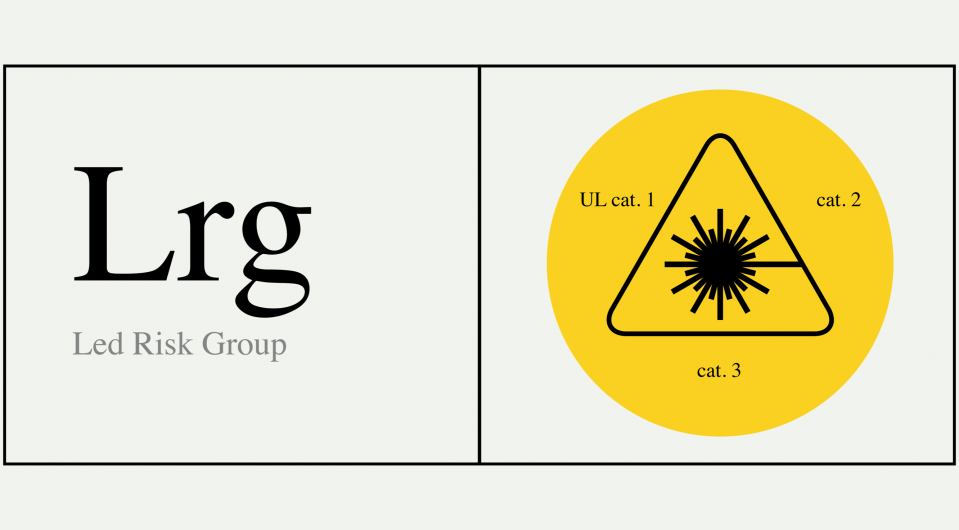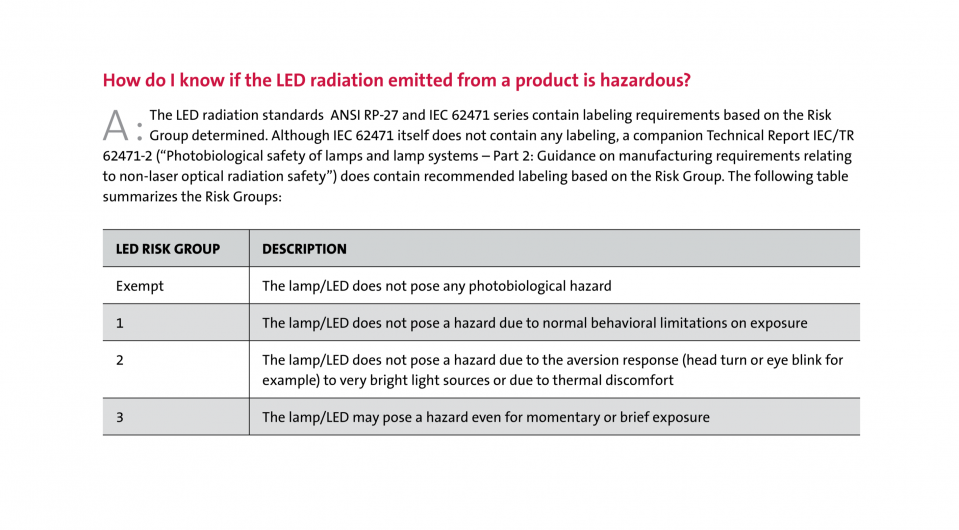LED Risk Group
How do I know if the LED radiation emitted from a product is hazardous?
A:The LED radiation standards ANSI RP-27 and IEC 62471 series contain labeling requirements based on the Risk Group determined. Although IEC 62471 itself does not contain any labeling, a companion Technical Report IEC/TR 62471-2 (“Photobiological safety of lamps and lamp systems – Part 2: Guidance on manufacturing requirements relating
to non-laser optical radiation safety”) does contain recommended labeling based on the Risk Group. The following table summarizes the Risk Groups:
_________________________________________________________________
How are LED based image projectors checked for radiation safety?
A:A relatively new standard in the IEC 62471 series was just recently published in 2015: IEC 62471-5 – “Photobiological safety of lamps and lamp systems – Part
5: Image projectors”. This standard addresses radiation safety specifically from projectors incorporating LEDs and lamps, as well as laser-illuminated projectors that fulfill the requirements specified in IEC 60825-1 Ed. 3 (2014).
_________________________________________________________________
How is a potential LED radiation hazard from a product conveyed?
A:When evaluated to the LED radiation safety standards, the LED radiation is assigned a Risk
Group classification. There are four possible Risk Groups: Risk Group Exempt, Risk Group 1, Risk Group 2, and Risk Group 3. Risk Group Exempt is the least hazardous and Risk Group 3 is the most hazardous. The higher the Risk Group, the more safeguards you should expect to see on the product.
_________________________________________________________________
How is the Risk Group of LED radiation determined?
A:The Risk Group of LED radiation is determined by a series of irradiance and radiance measurements on
the radiation. Once these irradiance and radiance values are measured, they are used in summation equations for comparison to various Exposure Limits defined in the standards. For example, there are Limits for hazards such as Ultraviolet (UV), Blue Light, Infrared, etc. Also, the standards consider some wavelengths to be more hazardous than others, so there are weighting factors applied to certain wavelengths in some cases. Each Risk Group (Exempt, 1, 2, and 3) has Limits for each of these various hazards. When it is determined that all of the measurement results fall below all Exposure Limits in a Risk Group, the radiation is then described as belonging to that particular Risk Group.









